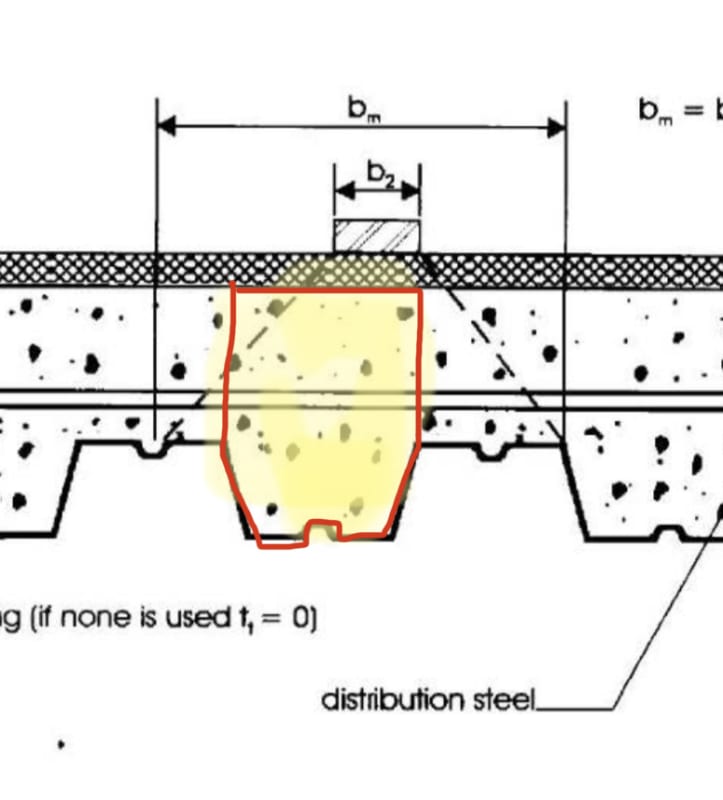MIStructE_IRE
Structural
Hi,
I’m wondering if anyone has a reference for point loads on composite slabs. My initial view, as marked up in the below diagram, is that the load is essentially taken by an individual rib. However, if this is the case, then many data centre floor slab designs I’ve seen couldn’t be justified.
Most designs I’ve seen for data halls design a high uniform distributed load, but many fail to consider the fact that the loads are applied via the pedestals of a raised access floor, which if concentrated on a single rib, considerably overload that particular rib.
Any thoughts? Could this justifiably be spread over a number of ribs?

I’m wondering if anyone has a reference for point loads on composite slabs. My initial view, as marked up in the below diagram, is that the load is essentially taken by an individual rib. However, if this is the case, then many data centre floor slab designs I’ve seen couldn’t be justified.
Most designs I’ve seen for data halls design a high uniform distributed load, but many fail to consider the fact that the loads are applied via the pedestals of a raised access floor, which if concentrated on a single rib, considerably overload that particular rib.
Any thoughts? Could this justifiably be spread over a number of ribs?

